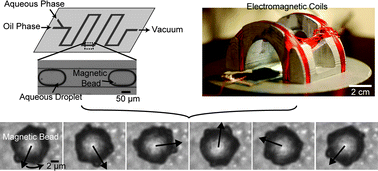Asynchronous magnetic bead rotation (AMBR) biosensor in microfluidic droplets for rapid bacterial growth and susceptibility measurements†
Abstract
Inappropriate

* Corresponding authors
a
Department of Chemistry, University of Michigan, 930 North University, Ann Arbor, MI, USA
E-mail:
kopelman@umich.edu
Fax: +1 734 936-2778
Tel: +1 734 764-7541
b Department of Biomedical Engineering, University of Michigan, 2200 Bonisteel, Ann Arbor, MI, USA
c Department of Chemical Engineering, University of Michigan, 2300 Hayward Street, Ann Arbor, MI, USA
d Applied Physics Program, University of Michigan, 2477 Randall Laboratory, Ann Arbor, MI, USA
e Department of Pathology, University of Michigan, Medical School, 1301 Catherine, Ann Arbor, MI, USA
Inappropriate

 Please wait while we load your content...
Something went wrong. Try again?
Please wait while we load your content...
Something went wrong. Try again?
I. Sinn, P. Kinnunen, T. Albertson, B. H. McNaughton, D. W. Newton, M. A. Burns and R. Kopelman, Lab Chip, 2011, 11, 2604 DOI: 10.1039/C0LC00734J
To request permission to reproduce material from this article, please go to the Copyright Clearance Center request page.
If you are an author contributing to an RSC publication, you do not need to request permission provided correct acknowledgement is given.
If you are the author of this article, you do not need to request permission to reproduce figures and diagrams provided correct acknowledgement is given. If you want to reproduce the whole article in a third-party publication (excluding your thesis/dissertation for which permission is not required) please go to the Copyright Clearance Center request page.
Read more about how to correctly acknowledge RSC content.
 Fetching data from CrossRef.
Fetching data from CrossRef.
This may take some time to load.
Loading related content
